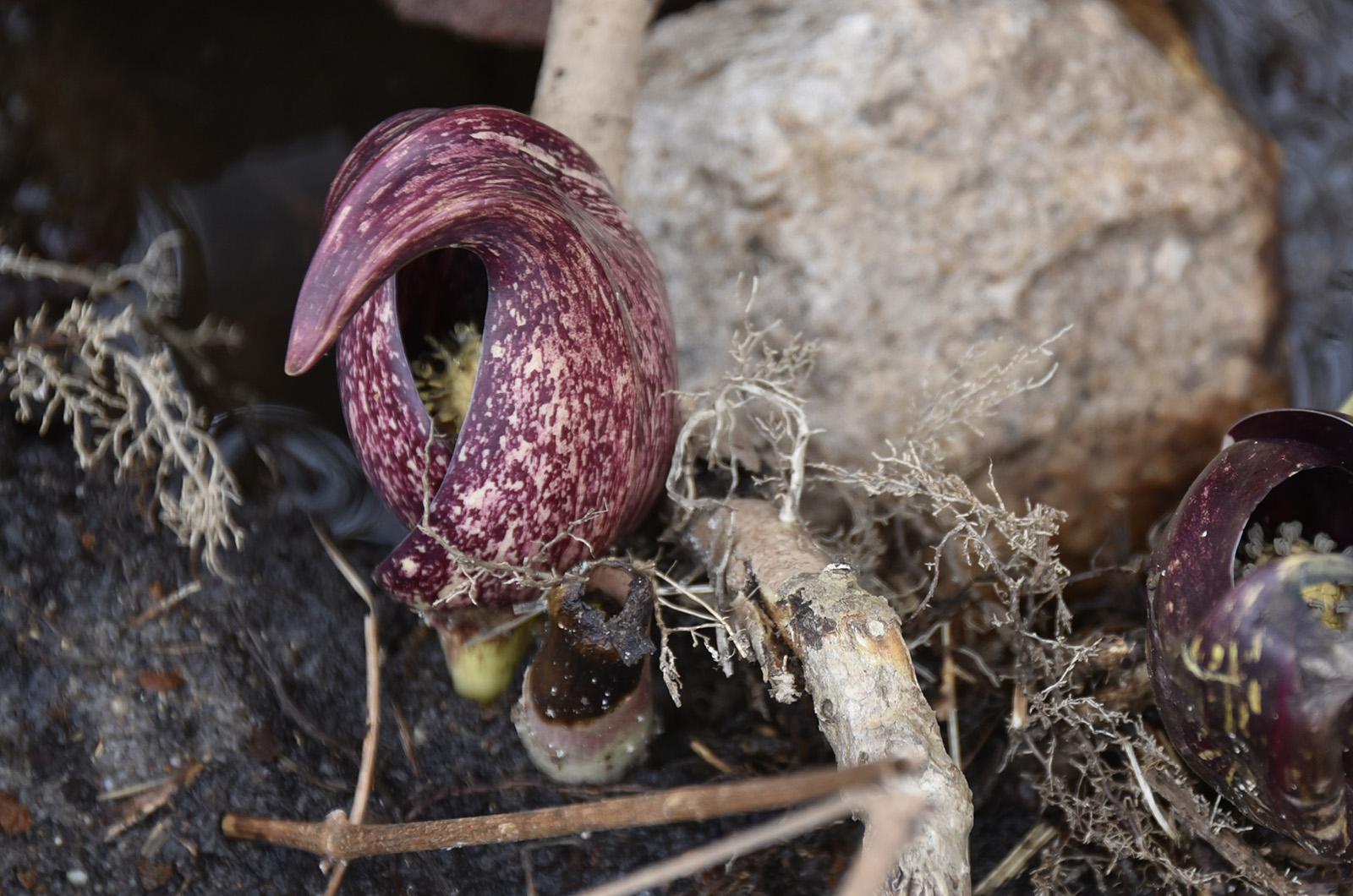Some like it hot. Marilyn Monroe did, feeling the heat in her 1959 classic comedic film. She is in good company with other heat seekers.
Cold weather is still keeping spring at bay, so many emerging creatures need to find warmth for their early season survival. Pollinators, like Marilyn, like it hot.
Thank goodness for thermogenesis. Thermogenesis is the ability of an organism to produce heat. This ability is common in animals, but less so in plants. Among the 14 plant families that can accomplish this trick, there is one plant that rises above the rest.
The Guinness World Record holder for thermogenesis is no other than our local early riser skunk cabbage (round of applause, please). Guinness reports that skunk cabbage can create a differential as high as 78 degrees between the inside of the plant and the ambient air temperature. Even when the ground is frozen, skunk cabbage can emerge through the hard earth and create a warm, protected home for the bees, flies, gnats and beetles that come out of dormancy.
We don’t know if Henry David Thoreau liked it hot, but we do know that he had his own love affair with this heat producing plant. It was rumored to be his favorite flora, and he shared this observation: “As the ice melts in the swamps I see the horn-shaped buds of the skunk cabbage, green with a bluish bloom, standing uninjured, ready to feel the influence of the sun. The most prepared for spring — to look at — of any plant.”
He continues: “Is it a lie or a vain boast underneath the skunk-cabbage bud, pushing it upward and lifting the dead leaves with it? They rest with spears advanced; they rest to shoot!”
Even when there is nothing else green, skunk cabbage resists being eaten by hungry animals just waking up from their winter snooze. Only bears are known to be able to regularly consume its foliage. The scent is likely the reason for its distaste, notable for its strong and quite odiferous quality, though that scent is also sometimes loved by carrion-consuming insects.
Though they have an impressive beginning, these leaves don’t have a great ending. They don’t last through the season, rotting and becoming black before midsummer. And just as the plants miraculously emerged, they just as quickly disappear, assisted by their strong and substantial root system. Skunk cabbage has contractive roots that pull the plant deeper into the soil every year. After a few seasons, it is almost impossible to pull or dig up, as those powerful roots resist any efforts at dislodging.
Fulling Mill Preserve is a great place to see skunk cabbage as you walk above them on gorgeous new bridges and boardwalks recently installed by the MV Land Bank. Even if the weather hasn’t turned toward warmer and sunnier days, skunk cabbage provides hope for greener days.
Thoreau, too, saw optimism in skunk cabbage, observing: “Those green cabbage buds lifting the dry leaves in that watery and muddy place. There is no can’t nor cant to them. They see over the brow of winter’s hill. They see another summer ahead.”
Suzan Bellincampi is director of the Felix Neck Wildlife Sanctuary in Edgartown, and author of Martha’s Vineyard: A Field Guide to Island Nature and The Nature of Martha’s Vineyard.




Comments
Comment policy »